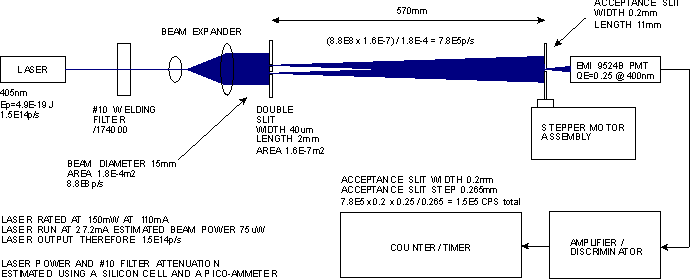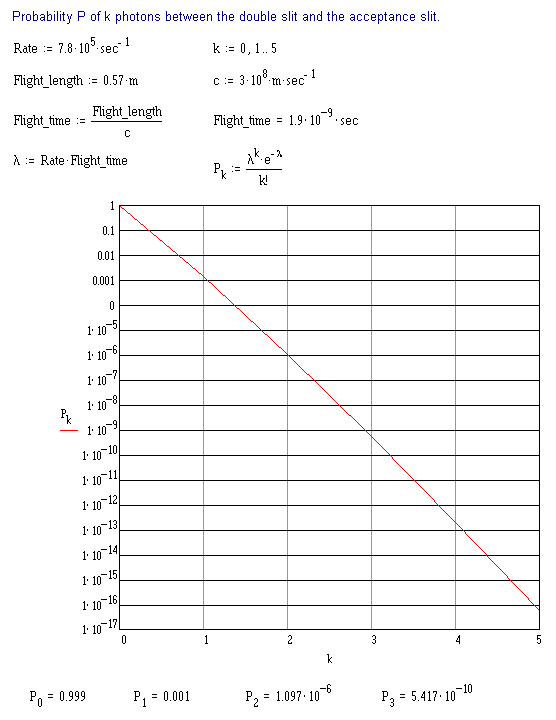

| Previous Page | Experiments Menu | Main Menu | Next Page |
|---|
Claiming that the interference in this experiment is occuring one photon at a time clearly requires some justification.

Another diagram of the Young's slits experimental arrangement is shown above. The blue laser is rated at 150mA, but is actually only operating at 20mA. The output power is not linearly related to the current. Based upon ratings of the laser and measurements using a silicon cell and a pico-ammeter, I have estimated the beam power to be 75uW at 20mA supply current. This measurement relies upon the response of the silicon cell being linear. The laser wavelength is 405nm and a 405nm photon carries 4.9x10-19J of energy, hence the output of the laser is 1.5x1014 photons per second. The attenuation of the welding filter at 405nm has been estimated to be 174000, again using the silicon cell and a pico-ammeter. After filtering and passage through the slits there are only 7.8x105 photons per second remaining. If these photons were in free space, on average, they would be 385m appart.
The probability of there being more than one photon in the interference region of the apparatus at the same time can be calculated using the Poisson distribution function.

The Poisson distribution for operation with the blue laser and 0.04mm wide Young's slits was calculated using Mathcad and is shown above. Although there are 780000 photons per second passing between the double slit mask and the acceptance slit, each photon travels at 3x108ms-1 and only spends 2ns in flight.
The Poisson distribution shows that there are no photons in flight between the diffraction mask and the acceptance slit 99.9% of the time. 0.1% of the time there is one photon in flight and only 0.0001% of the time there are two.
Hence, for all practical purposes, the interference can be considered to be occurring one photon at a time.
The next page has a quick multiple-choice quiz that you can use to test your knowledge. You will need Java installed.
| Page Title | Description |
|---|---|
| Background | Introduction to diffraction and Young's slits. |
| Information Encoding | This page attempts to show the similarities between the frequency content of an electrical waveform and the diffraction pattern of an object. |
| Project Construction | Information about how the experiment was built. |
| Quiz | A multiple choice quiz (requires Java). |
| Instructions | Instructions for operation of the experiment. |
| Online Experiment | The live interactive Young's slits experiment. Please read the instructions first. |
| Conclusion | Conclusion and references. |
| Previous Page | Experiments Menu | Main Menu | Next Page |
|---|